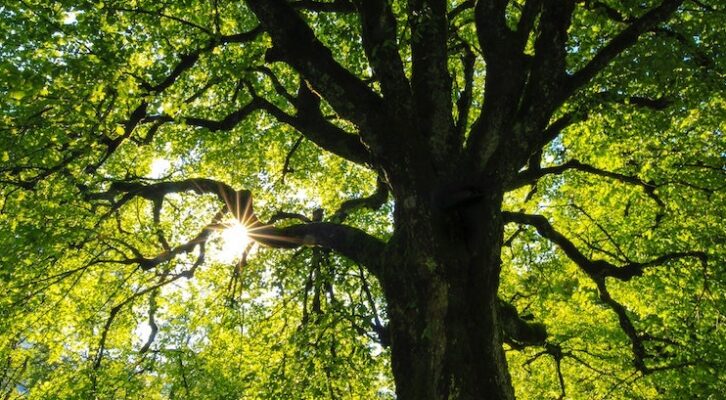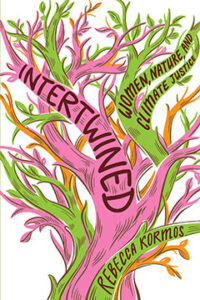
How a Multitude of Voices Can Broaden Our Understanding of the Natural World
Rebecca Kormos on the Changing Face of Nature and Climate Narratives
A 2021 article in The Guardian revealed that “for the top 10 bestselling female authors (who include Jane Austen and Margaret Atwood, as well as Danielle Steel and Jojo Moyes), only 19 percent of their readers are men and 81 percent, women, but for the top ten bestselling male authors (who include Charles Dickens and J.R.R. Tolkien, as well as Lee Child and Stephen King), the split is much more even: 55 percent men and 45 percent women.” In other words, women are prepared to read books by men, but many fewer men are prepared to read books by women.
Not surprisingly, women authors have used their initials instead of their full names, disguising their gender as a means to get more readers, as demonstrated by the above-cited author of The Guardian. She writes, “The byline at the top of this piece reads MA Sieghart, not Mary Ann. Why? Because I really want men to read it too.”
Disguising gender is something women have been doing for centuries to increase their readership, either by using initials or choosing a male pen name. Mary Ann Evans, poet and author during the Victorian era, published under the name “George Eliot.” Louisa May Alcott used the name A.M. Barnard before publishing Little Women. When the Brontë sisters first published their books, Charlotte used the name “Currer,” Anne used “Acton,” and Emily used “Ellis”; all of them used “Bell” as their surname.
There is a growing fatigue from overused tales, and a thirst for more courageous stories that are challenging old narratives.
For the first few years after I moved to California with my husband and two-year-old daughter, and after my second daughter was born a month after we arrived, despite the business of parenthood, we would grab every moment we could get to visit the state’s spectacular national parks. To learn more about my new home, I also immersed myself in nature writing on California. I loved especially the stunning quotes of John Muir: “The mountains are calling, and I must go,” and “The clearest way into the Universe is through a forest wilderness.” My favorite used bookstore had a nature writing shelf where I found works by Henry David Thoreau, Aldo Leopold, and Ralph Waldo Emerson.
While I love the writing and poetry of these great men, I also feel that they have received excessive attention while women nature writers, no matter how prolific, no matter how groundbreaking, no matter how adventurous or moving, have not received enough. In Writing Wild, a book published specifically with the goal of highlighting the works of “women poets, ramblers and mavericks who shape how we see the natural world,” Kathryn Aalto describes what led her to write the book.
In 2003, she read an Outside magazine article on “Essential Books for the Well-Read Explorer” and noticed that twenty-two of the twenty-five books were by white men. Aalto was not alone in noticing the lack of gender diversity: a 2021 editorial in Nature magazine reviewed an external analysis of fifteen years of stories to reveal that men are quoted more than twice as often as women in Nature magazine’s journalism.
Luckily, things are changing. The Nature article also found that the proportion of women quoted had risen from 13 percent in 2005 to 20 percent in 2017. We can also see a growing focus in general on women working to protect nature in media and magazines, such as Sierra magazine (published by the Sierra Club) and National Geographic magazine. Anthologies highlighting the issues facing women in the climate space are increasing too, including All We Can Save: Truth, Courage, and Solutions for the Climate Crisis, a stunning and powerful collection of works by sixty women at the forefront of the climate movement “who are harnessing truth, courage, and solutions to lead humanity forward.”
The editors of the book, Ayana Elizabeth Johnson and Katharine Wilkinson, have also turned this book into All We Can Save Project, which aims to build community, change false narratives through “deep learning” about climate change by providing toolkits, and fostering circles of support and dialogue.
Intimate Nature, edited by Linda Hogan, Deena Metzger, and Brenda Peterson, has assembled stories, poems, and other writings from over fifty women about animals, plants, and nature into an extraordinary chorus of women’s wisdom. In the introduction, the editors write, “What women have brought into the equation is a respect for feeling and empathy as tools to create intimate bonds of connection.”
In truth, I hunger for books about nature and science by women. My bookshelves are filled with titles such as Naomi Klein’s This Changes Everything, Elizabeth Kolbert’s The Sixth Extinction and Under a White Sky, Lauret Savoy’s Trace: Memory, History, Race, and the American Landscape, Terry Tempest Williams’s Erosion: Essays of Undoing, and of course Robin Wall Kimmerer’s Braiding Sweetgrass. In these books, I find a part of myself either reflected or validated. I find a role model, a dream realized, or a barrier broken. Their stories make my own dreams seem possible. I also see a world reimagined, not just redecorated. I see a contestation—or even the eradication—of many of the myths about gender that infiltrate our lives.
Author Laura Pritchett writes: “The truest thing I can say, though, is this: We’ve been told some bad stories. Untruths and bald-faced lies about how to live on Planet Earth, perhaps even by nature writers.” Her recommendation is “telling new stories. Brave stories. Complex stories that embrace our problematic history of unlocking fossil fuels, or in silencing voices, or in our communication with and about land. We need stories that fashion new narratives about ecological wisdom for our future.”
We are living in exciting times. There is a growing fatigue from overused tales, and a thirst for more courageous stories that are challenging old narratives, uncovering silenced truths, and reframing even the very questions we ask. For those who may have not previously been drawn to nature writing, or who have even avoided it, this new writing offers new ways of seeing our world. Ingrid Horrocks writes that “like many of us, once, I did not really read what gets called ‘nature writing,’ thinking of it as inevitably boring, elegiac, pious. But I read this new wave of bending, resistant writing, as though my life depends on it. Perhaps it does.”
For those who may have not previously been drawn to nature writing…this new writing offers new ways of seeing our world.
Women are underrepresented in storytelling and, but women of color even more so. Leah Thomas, the activist who first used the term “intersectional environmentalism,” is author of the book The Intersectional Environmentalist: How to Dismantle Systems of Oppression to Protect People + Planet. She wrote in a 2022 article for Vogue magazine,
I don’t want to read about John Muir anymore. I know his story after studying Environmental Science and Policy because it flows throughout the curriculum. I’ve grown tired of single-lens environmental narratives that prioritize male, mostly white, perspectives. Why are their legacies considered mandatory education while conservationists of color go unstudied and underappreciated?
So, in her article, she highlights the work of five Black environmentalists, including park ranger Betty Reid Soskin, the oldest full-time National Parks Service ranger at one hundred years old; Hazel M. Johnson, mother of the environmental justice movement; Teresa Baker, founder of the initiative In Solidarity; and Rae Wynn-Grant, educator, wildlife ecologist, author, storyteller, and public speaker. Leah also names Gloria Walton, president and CEO of The Solutions Project, which “brings grants, media training, and celebrity support to local renewable energy and climate justice organizations and initiatives.” Leah adds, “Her organization invests 95 percent of their funds into grassroots environmental organizations with leaders of color, prioritizing women.”
We are also seeing the publication of more children’s books lifting up incredible women who are working to protect nature and inspiring young girls with their efforts. The blog A Mighty Girl has recognized “16 Women Environmentalists You Should Know” and “25 Books for Kids About Women Environmentalists.” For young adults, Climate Champions (15 Women Fighting for Your Future) by Rachel Sarah was published in 2023. We are on the rise.
__________________________________

This excerpt originally appeared in Intertwined: Women, Nature, and Climate Justice by Rebecca Kormos. Copyright © 2024. Published by The New Press. Reprinted here with permission.
Rebecca Kormos
Rebecca Kormos is a primatologist, wildlife biologist, conservationist, filmmaker, writer, National Geographic Explorer, and one of the co-founders of the Women in Nature Network. Intertwined: Women, Nature, and Climate Justice is her first book. She lives in Berkeley, California.



















